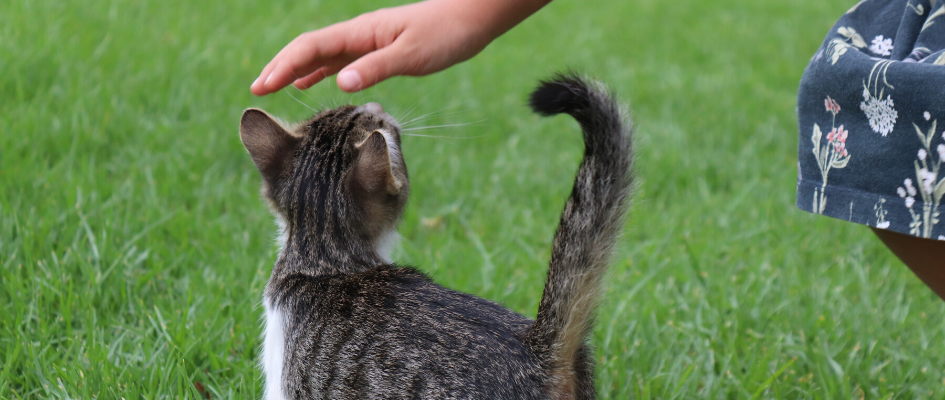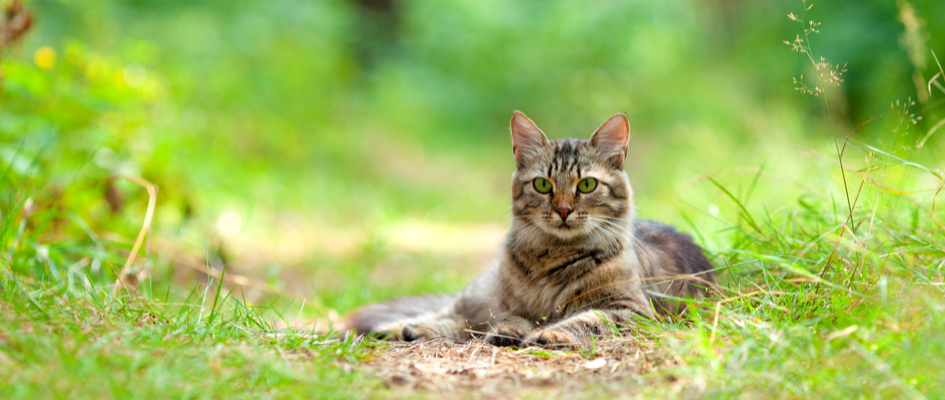RSPCA figures show Greater London takes the top spot for most cats rescued, with 2,350 cats coming into RSPCA care last year. Whilst it is commendable to try and help our feline friends, first we need to decide if the cat is indeed a stray in need of help.
How can I tell if it is feral?
Feral cats are usually the offspring of stray, feral or abandoned cats that have missed out on early socialisation with humans, making them very wary of us. If they are adults already, they will not make good pets. If the cat is not friendly and approachable, it may be feral. These cats often (but not always) live in colonies rather than alone. They won’t come close, even with encouragement, and will avoid human contact. They may have a part of the ear tip missing indicating they have been trapped, neutered and released by a charity in order to keep feral populations down.
So long as a feral cat is healthy, they will live happily outside. They should be largely left alone. However if they appear injured or ill, then contact the RSPCA. Various national charities have neutering schemes so if you see a colony of cats without ear tipping, contact your local RSPCA or a local charity such as the Celia Hammond Trust for more advice.
I don’t think it’s feral – what do I do now?
If the cat is alone, approachable and friendly, it may be a cat that belongs to someone, that has strayed. Some owned cats will stray further from home than others, so we must take care not to mistake an owned cat out on their constitutional, for a lost cat. Cats may be greedy and take advantage of a well-meaning neighbour for an extra meal. They may be on a special diet at home that they’re less than pleased with, so in search of a tastier supper.
However, if you are regularly being visited by the same cat, looking for food and shelter, then action is needed.

What can I do?
Firstly check the cat for a collar. If there is one it clearly has had an owner. If the collar has a contact number on it, then get in touch and explain your situation. There may be an owner frantically searching for their missing feline friend.
If there is no collar or contact details, then you could pop the cat in a basket and take it along to your nearest vet to be scanned for a microchip.
A microchip is a permanent method of electronic identification implanted subcutaneously under the skin between the shoulder blades. Each chip has a unique number, detected using a microchip scanner. The microchip number is recorded on a microchip database with details about the animal and owner. In the majority of cases, the microchip is registered to an owner and, hey presto — a reunion ensues.
If taking this cat into your nearest vet is not possible, there is no chip found on scanning, or the chip is not registered to an owner then next you could try:
- Speaking to neighbours. News spreads fast. Word of mouth is often the best way of reuniting pets with owners.
- Using a photo of the culprit and make a ‘found’ poster, putting them up in the local area.
- Posting the kitty on on local social media sites and lost and found sites. This immediately magnifies your search.
- Listing the cat on national websites such as Pets Located and the National Pet Register and look through the lost cat sections. You can list a found cat on the Battersea website here.
- Contacting us and other local vet practices. Often owners missing their pets will think the worst and contact local vet practices first. Practices often keep a list of missing cats should one matching the description turn up.
- Creating a homemade paper collar that you can attach around the cats neck (if you can get close enough). Ensure the fitted collar allows for two fingers to be placed between the collar and cat’s neck, to make sure the cat isn’t harmed. Write your contact telephone number on the collar strip and something along the lines of: Your cat has been visiting me and I am concerned it is a stray. Please contact me if it belongs to you.
None of this has worked, so what can I do now?
If there is still no sign of an owner then you could consider keeping the cat yourself. This is a big commitment of a potential 15 years or more, though, so must be thought about very seriously. If you are new to cat ownership, get in touch with us and we can run through the basics of cat care and what to expect so you can decide if it’s for you.
If you are not able to keep the cat then, unlike dogs, local authorities do not take in stray cats. Try contacting one of the charities below:
- Local RSPCA animal centre
- Cats Protection
- Bluecross Lewisham
- The Celia Hammond Trust
- Battersea have three london branches. The London centre accepts stray cats 24 hours a day. Old Windsor and Brands Hatch centres accept stray cats between 9am and 5pm. Contact them before taking a stray.
If you do not have any luck we may be able to provide more local charity details.
Is the cat injured or ill?
If you’re worried about the health of the cat, call the RSPCA on its emergency number 0300 1234 999 (UK). A lost cat might be nervous, especially if sick and injured, so approach them with caution. The safest way to move the cat is to carefully cover it in a blanket before picking it up. This keeps the cat safe as well as shielding you from claws and teeth.
If the cat is seriously injured, take it to your nearest veterinary practice immediately.

